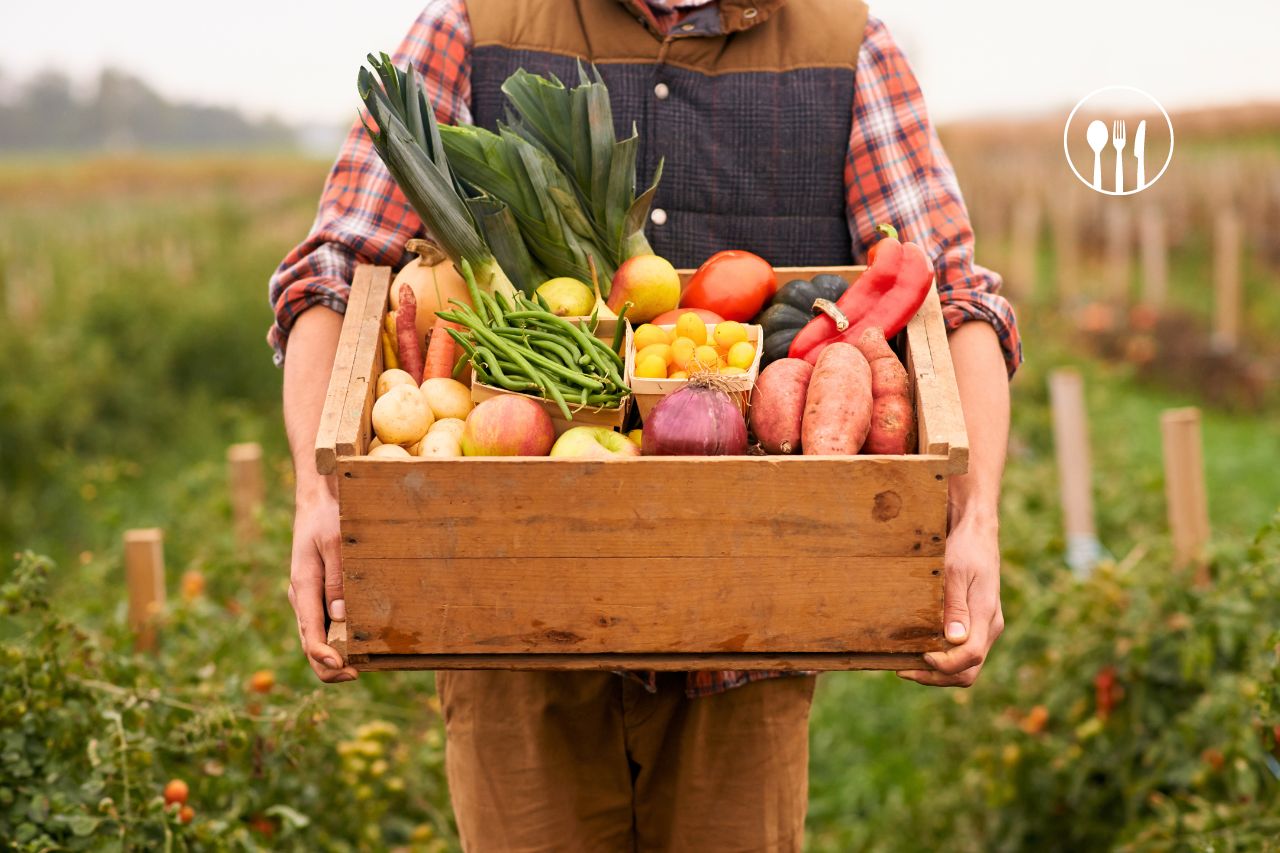

Vegetables are a key part of diets all around the world. Different countries have their own favorite veggies that are important to their culture and cuisine. In this article, we’ll explore the most popular vegetables in ten different countries and learn why they are so loved.
Tomatoes hold a special place in Italian cuisine. Introduced in the 16th century, they quickly became a staple. Tomatoes are now a key ingredient in many traditional dishes, symbolizing the heart of Italian cooking.
Italian cuisine boasts numerous tomato-based dishes:
Different regions in Italy have unique ways of using tomatoes:
Tomatoes are more than just an ingredient in Italy; they are a symbol of the country’s rich culinary heritage.
Potatoes have a deep-rooted history in Peru, dating back thousands of years. They were first cultivated by the ancient Inca civilization. Potatoes are not just a food item but a significant part of Peruvian culture and heritage. The country is home to a vast array of potato varieties, each with its unique flavor and texture.
Peruvian cuisine boasts a variety of traditional dishes that highlight the versatility of potatoes. Some popular dishes include:
Peru is known for its incredible diversity of potatoes. There are over 3,000 different types grown in the country. Some notable varieties include:
The rich diversity of potatoes in Peru is a testament to the country’s agricultural heritage and the importance of this humble tuber in daily life.
Onions, or pyaz in India, are a vital vegetable in Indian cuisine. They are used in almost every dish, from curries to salads. Onions add a unique flavor and aroma that is essential in Indian cooking. They can be found in various forms such as chopped, sliced, or pureed.
Onions are not just tasty; they are also packed with health benefits. They contain natural sugar, vitamins A, B6, C, and E, and dietary fiber. Onions also have minerals like potassium, iron, and sodium. Eating onions can help lower blood pressure, support bone health, and reduce inflammation.
India is the second-largest producer of onions in the world, with an annual production of around 19.3 million metric tons. The major onion-producing regions in India include Maharashtra, Karnataka, and Madhya Pradesh. These regions have the ideal climate and soil conditions for growing onions.
Chilies have been a staple in Mexican cuisine for thousands of years. They were cultivated by ancient civilizations like the Aztecs and Mayans, who used them not only for cooking but also for medicinal purposes. Chilies are deeply embedded in Mexican culture, symbolizing both heat and flavor.
Mexican cuisine features a wide variety of dishes that highlight the unique flavors of chilies. Some popular dishes include:
Mexico is home to numerous chili varieties, each with its own distinct flavor and heat level. Some of the most well-known types include:
Chilies are not just a food ingredient in Mexico; they are a part of the country’s identity and heritage.
In summary, chilies play a crucial role in Mexican cuisine, from traditional dishes to the diverse varieties grown across the country.
Cabbage is a key ingredient in many traditional Korean dishes. The most famous is kimchi, a fermented vegetable dish that is a staple in Korean cuisine. Cabbage kimchi, made with napa cabbage, is the most popular variety. Other dishes like baechu-geotjeori (fresh kimchi) and baechu-doenjang-guk (cabbage soybean paste soup) also feature cabbage prominently.
Cabbage is not only delicious but also packed with nutrients. It is rich in vitamins C and K, which are essential for immune health and blood clotting. Additionally, cabbage contains fiber, which aids in digestion and helps maintain a healthy gut. The vegetable is low in calories, making it a great choice for those looking to maintain a healthy weight.
South Korea has a long history of cabbage farming. The country’s mild climate and fertile soil make it ideal for growing this vegetable. Farmers use both traditional and modern techniques to cultivate cabbage, ensuring a steady supply throughout the year. In 2022, cabbages were the most consumed vegetables in South Korea with a consumption volume per capita of around 52 kilograms, followed by onions.
Carrots are a staple in Australian households, consistently ranking as the most purchased vegetable. Carrots and potatoes were the only vegetables to be purchased by over 60 percent of households on a weekly basis, reflecting their importance in the diet of everyday Australians. The budget-friendly carrot is now in-season with millions of Queensland-grown carrots hitting the shops from June.
Carrots are not just popular for their taste but also for their health benefits. They are fat-free, cholesterol-free, and low in sodium and calories. Carrots are known to balance blood sugar levels and are highly nutritious. They are also rich in vitamins and minerals, making them a healthy choice for everyone.
Carrots are versatile and can be used in a variety of dishes. Some popular Australian recipes featuring carrots include:
These dishes highlight the versatility of carrots in both sweet and savory recipes.
Carrots remain the Australian consumer’s first choice when it comes to vegetable purchasing, showing their enduring popularity and importance in the Australian diet.
Spinach is a beloved leafy green in the United States, often found in salads, smoothies, and cooked dishes. Spinach, romaine, and spring mix are among the top choices for taste among Americans, just behind iceberg lettuce. Its versatility makes it a staple in many households.
Spinach is packed with nutrients, including vitamins A, C, and K, as well as iron and calcium. It’s low in calories but high in fiber, making it a great choice for those looking to maintain a healthy diet. The nutritional benefits of spinach contribute to its popularity.
The United States is one of the leading producers of spinach globally. The top spinach-producing states include California, Arizona, and New Jersey. These states have the ideal climate and soil conditions for growing this nutritious vegetable.
Exploring the most popular vegetables in different countries around the world reveals a fascinating tapestry of culinary preferences and agricultural practices. From the ubiquitous tomatoes in the United States to the beloved onions in India, each nation has its own favorites that reflect its culture, climate, and cuisine. These vegetables not only add flavor and nutrition to our meals but also play a significant role in the global economy. As we continue to enjoy these diverse and delicious veggies, it’s clear that they are more than just food—they are a vital part of our lives and our world.
Tomatoes are a staple in Italian cuisine because they add rich flavor and color to many dishes. They have been used in Italy for centuries and are key ingredients in popular dishes like pasta sauce and pizza.
Peruvian potatoes are unique because they come in many different shapes, colors, and flavors. Peru is home to thousands of potato varieties, and potatoes have been a crucial part of Peruvian culture and diet for thousands of years.
Onions are used in almost every Indian dish. They are often fried until golden brown to form the base of curries, stews, and sauces. Onions add sweetness and depth to the flavors.
Chilies are essential in Mexican cuisine because they add heat and flavor to dishes. They have been used in Mexico for thousands of years and come in many varieties, each with its unique taste and spice level.
Cabbage is very nutritious. It is low in calories but high in vitamins C and K. It also contains fiber, which helps with digestion, and antioxidants that can help protect against certain diseases.
In Australia, carrots are used in a variety of dishes. They can be eaten raw in salads, roasted as a side dish, or added to soups and stews. Carrot cake is also a popular dessert.

Monday - Thursday 7 AM - 5 PM PST
admin@selfstalker.com support@selfstalker.com